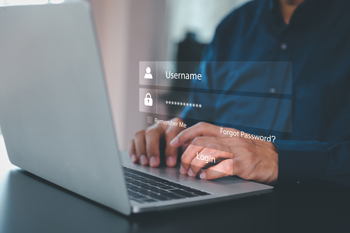Technology solutions, from software to help manage registrations and communicate with patrons to apps that help you stay on top of schedules and pool water maintenance, have proliferated across the recreation, sports and fitness industry. We asked four professionals—Gary Allen, product marketing manager for Xplor; Kristen Barnes, director at HydroApps; Christina Eschbacher, demand generation manager for CivicPlus; Devin Meister, demand generation manager for Vermont Systems—about how facility owners and operators should be using technology in their day-to-day operations.
“Your recreation management solution should make it easy for people to sign up for classes, reserve facilities and pay for memberships online, from any device, at any time of the day or night, boosting department revenue and community engagement,” Eschbacher, demand generation manager at CivicPlus. “With residents self-servicing their needs online, recreation staff members have more time to focus on the necessary community activity programming and park and facility maintenance initiatives, fostering positive resident interactions and improving the civic experience.”
Communicate Better

Staying stuck in a single communications channel is a problem technology can help solve, according to Meister. People like printed guides, but they can be expensive to produce and distribute, and they rely on a kind of “spray and pray” delivery, he explained. “We can never really be sure who is receiving and actually reading them. New technology provides insights that provide information about who is looking, interested and confirm their actions.
“Context is key,” he added. “We currently see a mix of print, email and text communications as integral to a district or department’s communications. But we anticipate that texting will play an increased role in the future. Its ability to be very targeted and timely makes it an effective tool for engaging the community.
“In a nutshell, it comes down to the right message for the right audience at the right time—and now parks and recreation departments have more control than ever before.”
A Self-Serve World
“Sometimes there’s a misconception that technology is a one-size-fits-all solution, and we don’t see it that way,” Allen explained. “We see the demand for self-serve options (whether that’s mobile, desktop or in-center via kiosks) continuing to grow amongst younger people.
“Providing more self-serve options actually has multiple benefits because it matches the expectations of more tech-savvy clients, while giving staff more time to spend with clients who prefer a more personal touch.
“More than anything, tech can help facility operators meet the changing expectations of their customers. It’s a new world, and clients are comparing the online experience to juggernauts like Amazon, Facebook and Apple. Providing an easy-to-use, self-serve experience isn’t just optional anymore; it’s what customers expect.”
Money Management
“Payments are one area where parks and recreation departments are lagging or not consistent across their organization or community needs,” Meister said. “Some locations take cash only. Others require checks or don’t take cash. Both involve manual processes that mean opportunities for errors, theft and time for the associates.
“Digital payments offer numerous advantages, from contactless options that saw rapid growth throughout the pandemic to consolidating accounting and getting insights into usage trends that can help drive planning. It also increases security, eliminating opportunities for theft or losses due to human errors.”
Accountability
Technology can help facilities take their risk management to the next level, Barnes said, helping managers “… track things like daily safety checks or facility walk-throughs and asset management,” in order to track safety and create layers of accountability.
“It’s not just about collecting data, though,” she added, “it’s really about how the software you choose gives you access to the data so that you can use it in a meaningful way. Instead of just checking tasks off a list or completing an incident report, the ability to run reports about the data collected can help track operational trends, identify risks, build the case for budgeting requests and even help take staff training to the next level.”
Access Control
“The labor shortage has created countless problems for parks and recreation departments everywhere, but entry and access control doesn’t have to be one of them,” Meister said. “Having a resource sitting at a gate, door or turnstile is not a productive use of time for anyone. While you can’t skimp on security, that doesn’t mean access has to be controlled by a person. A variety of technology, from simple ID cards to key fobs to even more advanced biometric scans, can deliver entry options for a variety of situations. Some ideas include: scannable ID cards, biometric scans, and proximity smart cards.”
Save Time
“A lot of conversations about technology revolve around the cost and how it can fit into a budget,” Barnes said. “When you look at the overall picture, though, it’s often easy to see how software can help you save time as well. Whether it’s the time saved versus manually scheduling staff or building tournament brackets, or the time you save running water chemistry reports for health department inspections, those minutes can add up to give you a quick return on your investment.” RM



